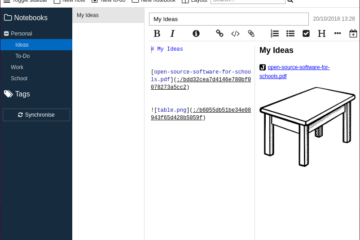Open Source Digital Signage for Schools
Digital signage offers new possibilities for schools. What used to be solved with posters on so-called “bulletin boards” or information boards is now increasingly being taken over by screens. Whether information about upcoming events, substitution plans, room signage or other important information – you can display many things more flexibly on screens. Updates can be applied from a central location or automated (e.g. for the substitution plan). Which Open Source Digital Signage solutions are available? What could be the requirements of a school? Today I would like to list some solutions that will be discussed in more detail in later articles.
What should a digital signage system be able to do?
The requirements will certainly differ from school to school, but there are a few essential characteristics that should be fulfilled by an Open Source Digital Signage solution:
- easy to use (e.g. editor for creating slides)
- easy and fast display of pictures, videos and other documents
- central management of multiple monitors (preferably with different groups / channels to display different information on different monitors)
- Possibilities for automation / schedule
- as free as possible (licenses or monthly fees)
Which Open Source Digital Signage solutions are there?
If you look around for Open Source Digital Signage solutions, you will quickly find what you are looking for. However, many of the so-called “open source” solutions are rather freemium solutions or only partially open source. I have not used any of these solutions myself so far. In the coming months, however, I will look at some of these solutions, as we as a school are still looking for a suitable digital signage system.
Screenly OSE
If you search Github for Digital Signage, Screenly OSE is by far the most popular system. Screenly OSE is designed for the Raspberry Pi. It offers basic features, but when using multiple devices, you have to manage each Raspberry Pi individually. You will find the differences between the OSE and the paid version here.
Xibo
Directly after Screenly OSE follows Xibo, if you go after the number of Github stars. Xibo has been around for quite a while. In contrast to Screenly there is no Pro vs. Open Source version, but all features are available for all. Xibo consists of a CMS, which you can install in a docker container, and the corresponding player, which you install on the display devices themselves. The player for Windows is free and Open Source, but for all other players you have to pay a license fee. There is the Xibo Player for Windows, Android and webOS. It looks like that they develop a player for Linux, but it is not yet available.
Concerto
Concerto has also been on the market for some time. Concerto offers many features and you can host it by yourself. Technically it is based on Ruby. If you take a look at their Github repository, the development seems to stall a bit. The web interface looks a bit old, too. But altogether a 100% Open Source solution.
LibreSignage
LibreSignage is still quite new open source solution and 100%, browser based. It does not need any special “players”, but you can use it via the browser. Basic features and multi-user operation are available.
Foyer
Foyer is a WordPress plugin. You can use it to create different pages, assign channels and different displays to these channels. It is a browser based app and therefore does not need a special player.
Tabula.info
Tabula.info is the only solution I have found that has been developed specifically for schools. It offers many nice features needed in a school and is specialized in displaying substitution plans, HTML pages and additional information. Its developed by a german teacher and only available in German.
Other solutions
Infobeamer
Infobeamer is only free for private, not public use. Otherwise it is probably one of the most powerful and flexible solutions. It uses the hardware of a Raspberry Pi to its maximum (e.g. hardware acceleration – a disadvantage that all browser-based solutions have).
Display Monkey
Display Monkey is also an open source solution that requires a Windows server. The individual displays only need a browser.
piSignage
Another solution for digital signage is piSignage. The server is OpenSource and you can host it by yourself. For the individual displays / players, however, you must purchase licenses (one-time). As the name suggests, piSignage uses Raspberry Pi’s as a player. The code for this is not Open Source.
Conclusion
At first glance, there seem to be many Open Source solutions. Which ones do you know that are missing here? Which systems have you used with good results? The tests will show which solution fits our situation best.



0 Comments